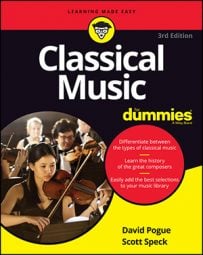There’s much less public demand for chamber music than there is for big orchestral concerts. As a result, tickets to chamber music concerts are usually very cheap, or even free. But don’t think that chamber music is less fun to listen to; a really good performance can knock your socks off.
In chamber music, the number of musicians is small, and each musician is usually just as important as every other. Instruments play off one another in delightful musical conversations. Because of the intimate and cooperative nature of chamber music, most musicians enjoy playing it more than anything else. And many of the recordings you hear are likely to be phenomenal performances.
Here are some all-time chamber music favorites, organized by composer:-
Giovanni Gabrieli (1551–1612): Canzona noni toni for three brass groups (12 players). The Italian word canzona means “song.” A master of the Renaissance era, Gabrieli wrote many pieces like this one for the warm, generous acoustics of the Basilica of San Marco in Venice. The three brass groups sat in different parts of the church, and their sounds literally bounced off one another. Truly inspiring music.
-
Wolfgang Amadeus Mozart (1756–1791): Serenade no. 12 in C Minor for winds. Mozart created this intense, four-movement wind serenade for an evening’s background entertainment. It begins lugubriously but works its way to a jubilant close.
-
Ludwig van Beethoven (1770–1827): String Quartet in C Major, Opus 59, No. 3. This piece is one of the three “Razumovsky” Quartets, dedicated to a rich Russian guy. Each quartet contains at least one Russian theme; it’s fun to pick out the themes as you listen.
-
Franz Schubert (1797–1828): Quintet in A Major (The Trout). Schubert wrote this piece for one each of piano, violin, viola, cello, and bass. It’s in five movements, the fourth of which is a set of variations on one of Schubert’s best-loved songs, called (logically enough) “The Trout.” If you want to convince yourself that chamber music is fun, this is the piece!
-
Felix Mendelssohn (1809–1847): Octet in E-flat Major, Opus 20. At least two things are amazing about this composition: First, Felix wrote it when he was 16; second, it was his 20th published work! One of the best things he ever wrote.
-
Johannes Brahms (1833–1897): Clarinet Quintet, Opus 115 in B Minor. Don’t be misled by its name — actually, this piece is written for a clarinet, two violins, a viola, and a cello. One critic wrote his review without having even attended the concert. “It was a good piece,” he wrote, “but the sound of five clarinets was rather odd.” Oops.
-
César Franck (1822–1890): Sonata for Violin and Piano in A Major. Franck wrote this gorgeous piece near the end of his life, and it reflects his maturity and mastery of composing. Although Franck wrote it for the violin, it’s a favorite among flutists and cellists, too.
-
Claude Debussy (1862–1918): Sonata for Cello and Piano. People often complain that modern music lacks melody. So what happens when the most well-known Impressionist composer (Debussy) teams up with the most singing of all instruments (the cello)? This happens. Lyrical, lush, and gorgeous, this sonata will convert you to Impressionism or your money back.
-
Dmitri Shostakovich (1906–1975): String Quartet No. 3. Shostakovich wrote 15 string quartets, of which this one is his most lighthearted. It’s constructed in traditional sonata form (which you can read about in Chapter 3), but it’s full of modern, sparkling, humorous touches.
-
Igor Stravinsky (1882–1971): L’histoire du soldat (The Soldier’s Tale). The piece is included, although it often needs a conductor to negotiate the tricky rhythms in performance. This piece uses seven instruments — the highly unusual combination of violin, bass, clarinet, bassoon, trumpet, trombone, drums — and a person, who reads a story about a soldier, a princess, and the devil. The music is clever, spicy, and surprisingly powerful.

